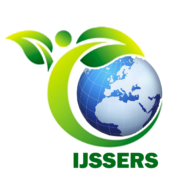Marketing Mix Strategy (7P) in Increasing Community Interest at Man 1 Trenggalek
Madrasahs continue to improve the quality of their education in the competition to attract the public. This is also done by MAN 1 Trenggalek which has strategies for increasing the number of quality students. This research aims to describe in depth the marketing mix (7P) strategy of MAN 1 Trenggalek in increasing public interest. Researchers use qualitative research. Data collection techniques are in-depth interviews, participant observation and documentation. Data analysis starts from data condensation, data presentation, verification and drawing conclusions. The results of the research show that the marketing mix strategy (7P) is: 1) The products being marketed are quality madrasah graduates, able to compete and can be accepted at State Universities, State Islamic Universities, Service Schools, TNI/POLRI, Tahfidzul Qur’ Islamic Boarding Schools an, and able to be absorbed into the world of work. 2) The price offered is an affordable education fee that does not burden the students’ parents, there is PIP, the education fee is IDR 0.- (rupiah) for those who do not have PIP but have one of the welfare cards. Rewards from the madrasa committee for outstanding students. 3) The madrasa marketing place is a strategic madrasa location in the central area of Trenggalek Regency, close to the Trenggalek stadium, several Islamic boarding schools and other important places. 4) Promotion/promotion by introducing and showing the advantages of the madrasah to prospective students and parents via social media within the network (IG, Tiktok, Web and others) and outside the network by participating in competitions at district, provincial and national levels. 5) People in marketing madrasa education services are qualified educators, well-dressed, polite, neat and friendly. Madrasah Committee, Parents and people who have good hopes for the development of the madrasah. 6) Process/The marketing process is good communication between all madrasa parties jointly marketing by carrying out the stages of planning, organizing, implementing and evaluating. 7) Physical Evidence/Physical Evidence consists of representative learning rooms, 3 language laboratories, computer laboratories, libraries, halls, teachers’ rooms, TU rooms, UKS, canteen and sports fields.

